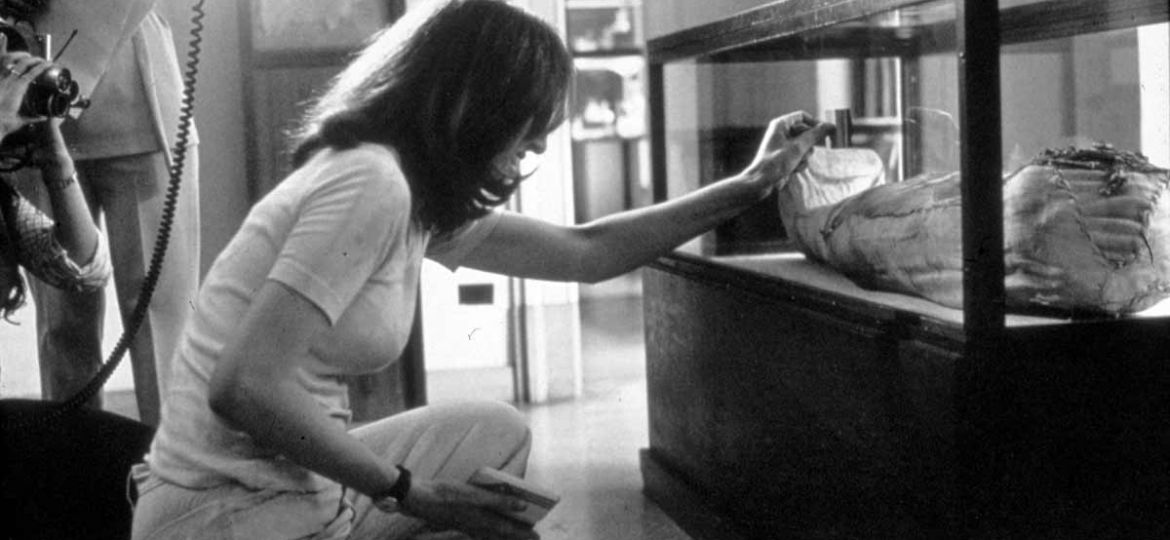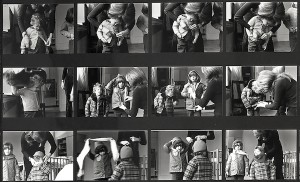
When I talk to a certain class of Indian men, no matter what generation they belong to, there is an overarching consensus that, yes, women should do things; yes, women should have careers and make strides in previously male-dominated fields. The strong and successful Indian woman is made in the model of Man and as far as her successes fall within the logic of capitalism and are carried out by subsuming ‘masculine’ (or what we have been conditioned to think about as masculine) qualities all is well. There is also an implicit assumption that in these power-couple households, the domestic work will still mainly be the domain of the woman who, even if she isn’t doing the actual work, will be the liaison interacting with the domestic workers doing the work.
In such a model of empowerment, there is no space to talk about ways in which neoliberal feminism fails certain kinds of women or how it feminises and dismisses certain kinds of essential work – usually domestic or maternal labour – to the detriment of both women and men, as women are always the locus on which the conversation about parental guilt and the weight of the second-shift of domestic labour is focused, and men are generally not considered equal partners in bearing those concerns as a shared load.
My mother has never been a professional. She studied commerce in college but did not like it too much. Instead of paying attention to her accounts classes, she wrote poetry about angry women: “The bitch twitched and was called a witch but didn’t give a shit,” one of her verses goes.
She got a diploma in textile designing because she liked art and making things. At the age of 27, she married my father and had me at 28. They had an arranged marriage. My mother is a mystery to me, but I find it easy to believe that the calm, curious and creative person who raised me for 23 years while conducting kids’ craft classes and creating hydroponic systems to water her herb garden was content being a wife and mother, as she tells me she was. It is inexplicable to me that she, pushy and intelligent as she is, has not taken over some corporate conglomerate and bent it to her will, but I also know that she is a woman who does exactly as she wishes and she wishes to grow spinach in my childhood bedroom and paint large, flowery landscapes, and does exactly that. Sometimes I wonder if it was a choice; of course, she will not admit to it being a necessity.
How do I think about her mostly domestic life and about the sort of work she has done for most of her life?
There is always a thin line when we talk about domestic things and women. On the one hand, valourising domestic labour and motherhood falls right into the ideological framework of the heteropatriarchal-sanskaari (‘cultured’)-Sooraj-Barjatya type construct that we must all collectively flee from for the greater good of the nation and the world. On the other hand, dismissing traditionally feminine forms of labour such as child-rearing, cooking, cleaning (Oh laundry, bane of my existence!) devalues their importance, which is strange because those forms of work are common to all humans. In middle- and upper-class India where cheap labour is commonly available, these tasks are usually relegated to domestic workers – usually women who will not get paid/maternity/illness leave. And often, in spite of our various feminisms, due to the devalued nature of the work they have to perform, they are treated as devalued individuals as well. In some ways, then, we are transferring the stigma associated with domestic labour to these already marginalised bodies. We are also reinforcing a binary in which value is associated with things that are associated with masculinity, and, as we all know, maternal work, care work and, to a large extent, emotional labour are more associated with femininity and are therefore not thought of as valuable or useful.
While I was a student at Smith College in the U.S., my personal mode of feminism was always shifting. On the one hand, growing up with slight shame about my mother being defined by her status as a homemaker, and I was completely averse to the idea that women could be at all happy in any domestic role. On the other hand, as I engaged with the work of artists such as Mierle Laderman Ukeles who tried to uncover and ascribe value to the invisible forms of labour that women did as mothers, I found it frustrating that a lot of narratives about feminism stripped away agency and power from women who had not chosen to be career women, similar to the way in which patriarchy seized away woman status for women who chose to not be mothers.
In her Manifesto for Maintenance Art 1969!, Mierle Laderman Ukeles claims that if development is about “pure individual creation; the new; change; progress; advance,” then the practice of maintenance aims to “keep the dust off the pure individual creation; preserve the new; sustain the change; protect progress; defend and prolong the advance; renew the excitement.”
Ukeles, through her insistence on the idea that all things must be sustained, protected, preserved and maintained, brings to the fore the centrality of maintenance in both public and private spheres, thereby making those forms of care-related labour visible. Written in one sitting in Philadelphia, Ukeles’ manifesto was a manifestation of the rage she felt when she was pregnant with her first child and a male mentor proclaimed, “Well, Mierle, I guess you know you can’t be an artist now.” Ukeles found that the traditions of artistic “freedom to act within the artwork with the body (learned from my Uncle Pollock), freedom to name (from my grandfather Marcel Duchamp) and freedom to pass from one dimension to another (from Mark Rothko)” were at odds with the new identity of Mother that the world was imposing on her. Her interest in maintenance work began with her attempt to reconcile the two people she had split into: Artist and Mother.
Mostly revolving around her role as mother and the caregiving activities she carried out, her early art underscored the feminist maxim that the “personal is the political”. In an attempt to politicise the personal and bring attention to the invisibility and the inevitability that seemed to come along with motherhood, she began to blur the boundaries between personal life and public spaces. As she details in her manifesto, “Everything I say is Art is Art. Everything I do is Art is Art. I am a woman. I am a wife. I am a mother. I do a hell lot of washing, cleaning, cooking, supporting, preserving, etc. Also (up to now separately) I do Art. Now, I will simply do these everyday things and flush them to consciousness, exhibit them as Art.”
Her first maintenance art activities exercised the “freedom to name” that she said she learned from Marcel Duchamp, in that she was using her position as artist to lend weight to the labour she did as a mother by calling it “maintenance art.” In her 1973 piece Maintenance Art Task: Dressing to Go Out/Undressing to Come In, she framed 95 contact prints that showed her demonstrating the mind-bogglingly repetitive work of dressing her two children to go out in the chilly winter weather and the amount of time and labour involved in carrying out simple tasks such as this one.
The work made the kind of labour that most women do visible in a public setting in which it would never be talked about. As Ukeles pointed out much after this work was exhibited,
“Jackson (Pollock), Marcel (Duchamp) and Mark (Rothko) didn’t change diapers… don’t even talk about it in company.”
By taking a gendered form of labour and presenting it in a gallery context, she challenged the cultural framework of the gallery space and thereby of the distinction between ghar (the home) and bahaar (the outside). It brought her gharkaam (housework) out into the open and highlighted that it was important work – after all, it is the work of staying alive. Of course, her genius lies in her rejection of the capitalistic and gendered ways of thinking that would call this work useless and in her synthesis of her identities as mother, artist and (as exhibited in famous photographs by her), chicken feather-plucker and shower-curtain scrubber.
As pointed out by Andrea Liss in her book Feminist Art and the Maternal, Ukeles’ early work rethinks the ‘maternal’. It allows us to see, as Liss puts it, “mothering as a form of work or practice rather than as an identity taken on only by mothers,” or for that matter, only women. By representing the word “mother” as verb rather than “noun” in her display of Maintenance Art, Ukeles challenges the idea of mother as a fixed identity that can only be held by women.
I find this denaturalisation of the maternal throws open the twin categories of maternal and domestic and allows them to be seen as a form of labour and not as an identity in and of themselves. When seen this way, there is nothing that makes females innately predisposed to do this sort of work; there is no gender- and class-bound shame attached to them, and they are simply things we do to maintain ourselves and our surroundings and, perhaps, the people we have chosen to love and support through reciprocal care/mother work.
—
Cover image source: Columbia.edu
[1] Most maintenance labour, especially as it relates to domestic work and sanitation-related work, is carried out by economically marginalised populations and therefore the work and the people who carry out the work have a sense of debasement and shame attached – a good example would be the caste- and labour-related stigmas that night soil collectors in India face.
